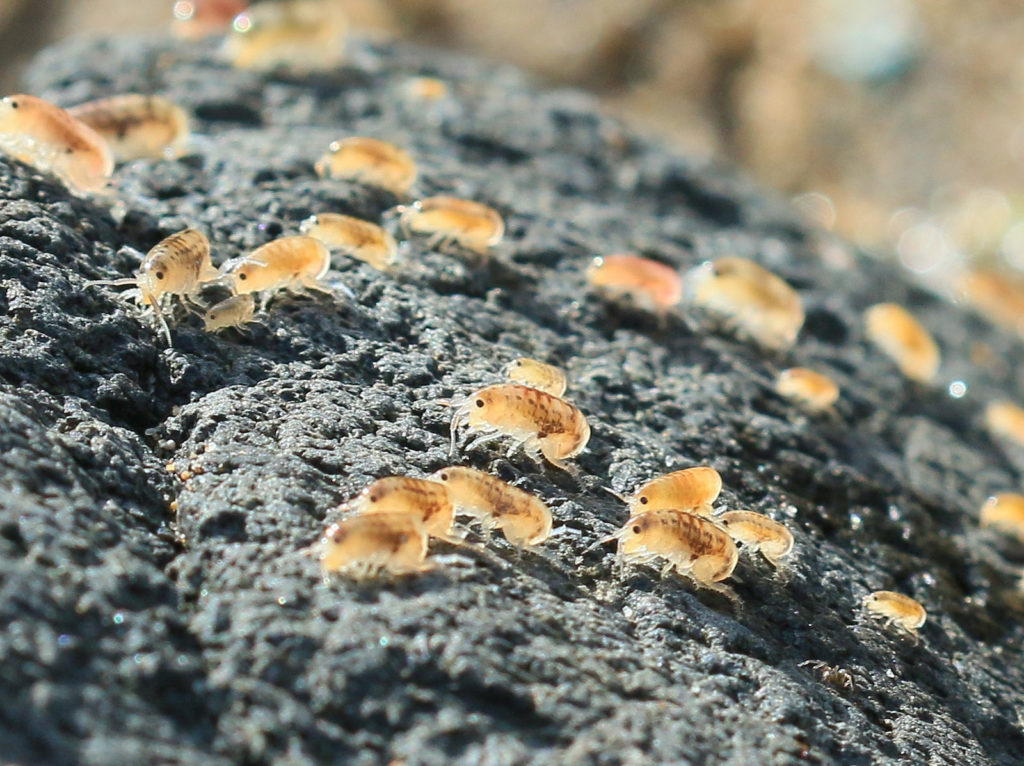Many marine organisms have a planktonic form. This means that they drift in the ocean for part of their life until they can find something suitable to attach to and grow. A common example of an animal like this would be a mussel or a barnacle. However, it’s a real headache when they land on human-made structures that are designed to let water through or be moved regularly, such as nets or fishing lines. One mussel is no problem, but colonies can easily weigh nets down, making them hard to reel in. Enough animals on the nets can even cause them to break or clog, leading to high replacement and cleaning costs. The accumulation of organisms on man-made structures in the water, from nets to pipes to cruise liners, is called “fouling.”
A team of researchers saw an opportunity in this “foul” problem – they could encourage these organisms to attach to collectors, which were 5 liter net bags that had an artificial environment inside. One type of collector contained mussel shells and the other contained plastic “raffia,” which are small pieces of plastic that have lots of ridges to create more places for organisms to attach to. They could then harvest the amphipods and other planktonic (drifting) organisms, which could then be crushed into a meal that is high in protein and omega-3 fatty acids, two important qualities for fish feed ingredients.
To test this, these collectors were put out around net pens containing sea bass or sea bream, both carnivorous fish, for 10 weeks at one location and 16 weeks at the other. They were positioned at a depth of either 5 or 15 meters to see if different organisms would settle at different depths. When they took the collectors back to the lab, they put them into fresh water to kill the organisms and remove them from the plastic or mussels. Fresh water alone managed to remove 80% of the animals, making it an effective and easy method, and therefore practical for busy fish farmers. The biomass obtained from the collectors was the same at both depths, which means the collectors could be put anywhere and everywhere around the net pen. The mussel shell collectors accumulated more biomass and withstood the ocean current better compared to the plastic-filled net bags. Using mussel shells in the collectors was also a form of recycling since the shells came from mussels cleaned off of the net pens.
The amphipods were then analyzed for their potential as a fish feed ingredient – the scientists measured the fat, protein, and carbohydrate content and the amount of amino acids. They also analyzed for some important trace elements, like calcium, and toxic heavy metals. The scientists were able to tell that the amphipods were absorbing waste material from the fish pens because they had a higher percentage of omega-6 oils, which come from terrestrial plants like soy in the feed, compared to normal marine amphipods.The amphipods were low in carbohydrates and relatively high in fat and protein, with high enough levels to support adult fish but not growing juveniles. They also contained enough essential amino acids, which are the building blocks for proteins your body can’t make on its own, except methionine, which can easily be supplemented. The amphipods also contained several non-essential amino acids that attract herbivores and carnivores, meaning all fish would likely find food made of amphipods very tasty. All these stellar qualities together mean that amphipods are a very promising feed ingredient with a lot of potential uses.
Growing several species in one farm like this is called “Integrated Multitrophic Aquaculture” (IMTA) and is an increasingly popular idea due to the improved sustainability (one species is grown on the waste of another) and profit from selling more than one product. It’s easier to get farmers to embrace IMTA by incorporating simple technology into pre-existing structures, like the collectors hanging from the same frame as the nets. These collectors then house animals that absorb the excess waste from the fish farm, which otherwise can damage the local environment, and create a food source that can be fed back into the system. According to the biomass they collected in this study, the researchers concluded that a facility with about 24 cages of finfish could produce 1 ton of amphipods per year by putting out these collectors. In the words of the authors, ”this means that one year’s potential aquaculture wastes [at one farm]…would be invested back into 335 kg of protein and 10 kg of marine lipids.” That sounds like a highly efficient recycling plan, but the collectors still need to be tested on a large scale to figure out if the amphipods can be processed without overburdening the farmers in terms of cost or work.


